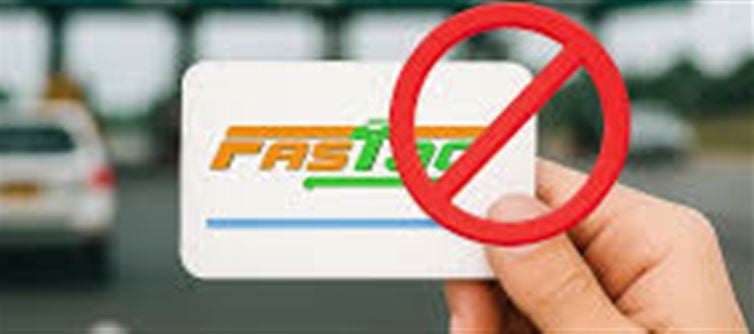
If you own a vehicle in india, chances are you're already familiar with FASTags, the RFID-based technology that makes toll payments seamless and efficient. But now, there's a new process on the horizon that could change the way you use your FASTag—KYV (Know Your Vehicle). Here's everything you need to know about it and how to avoid getting your FASTag blacklisted.
1. What is KYV (Know Your Vehicle)?
KYV is a new regulatory measure introduced by the indian government to enhance security and transparency in vehicle-related transactions. Essentially, it acts as a vehicle verification system that allows authorities to authenticate vehicle details to prevent misuse or fraudulent activities related to toll collection and vehicle ownership.
The KYV process will complement the existing FASTag system and is aimed at ensuring that your vehicle’s details are linked with your toll payments. Without completing this process, your vehicle might not be able to pass through toll plazas, and your FASTag could potentially be blacklisted.
2. Why is KYV Important for Your Vehicle?
The introduction of KYV aims to:
Prevent Fraud: KYV helps to verify the true ownership of the vehicle, reducing the possibility of vehicles being used with stolen or tampered documents.
Improve Toll Collection: By linking FASTag with the vehicle’s identity, it ensures that toll payments are properly linked to the correct vehicle.
Streamline Vehicle Management: This system will make it easier for the government to monitor and manage vehicles passing through toll booths, ensuring that all registered vehicles are compliant with the regulations.
3. The Consequences of Not Completing KYV
If you don’t complete the KYV process by the deadline, several consequences might follow:
FASTag Blacklisting: If your vehicle fails to go through the KYV verification, your FASTag will be blacklisted, which means you won't be able to use it for toll payments.
Inability to Pass Tolls: Once your FASTag is blacklisted, you may be forced to pay tolls manually, which is far less convenient and time-consuming.
Vehicle Registration Problems: KYV might also be linked to vehicle registration databases, and failure to comply could create problems when renewing your vehicle’s registration or getting clearances for other documents.
4. How to Complete the KYV Process?
The Know Your Vehicle (KYV) process involves submitting certain documents and details related to your vehicle and its ownership. The process is expected to be digitally streamlined for ease of use.
Here’s what you need to do:
Log into the Official Portal: Visit the National Highways Authority of india (NHAI) website or the relevant state portal for vehicle registration.
Enter Vehicle Details: You’ll need to enter details such as your vehicle’s registration number, engine number, chassis number, and other identifying information.
Upload Required Documents: Some documentation may be required to complete the KYV, such as your vehicle registration certificate (RC), insurance details, and Aadhaar card or driver’s license.
Complete the Verification: After submitting your details, the system will verify your information against the central vehicle database. If everything matches, your vehicle will be successfully verified under the KYV process.
5. What Happens After KYV Completion?
Once you successfully complete the KYV process:
FASTag will remain active: Your toll payments will continue as usual, with no disruptions to your toll-free passage.
Vehicle Data Security: Your vehicle’s information will be securely linked with the government’s databases, making it harder for unauthorized individuals to misuse your vehicle’s details.
Access to Future Services: Completion of KYV may be a prerequisite for other future services or benefits, such as roadside assistance or vehicle-related schemes offered by the government.
6. What to Do if Your FASTag Gets Blacklisted?
If your FASTag gets blacklisted due to the failure of the KYV process, you’ll need to:
Complete the KYV Process: Follow the steps mentioned above to complete your vehicle’s verification.
Contact Your Bank: Once your KYV is done, you may need to reach out to your FASTag provider to lift the blacklist status.
Be Aware of Future Deadlines: Ensure you complete the verification before the next deadline to avoid future inconvenience.
7. Conclusion: Stay Ahead of the Curve
While the KYV process may seem like an additional administrative task, it’s essential for the security and efficiency of India’s toll collection and vehicle management system. To avoid disruptions with your FASTag and continue enjoying seamless travel, make sure to complete your vehicle’s verification at the earliest.
By staying on top of this process, you’ll not only ensure your toll payments are hassle-free but also be part of the government’s efforts to streamline road travel and ensure security.
Disclaimer:
The views and opinions expressed in this article are those of the author and do not necessarily reflect the official policy or position of any agency, organization, employer, or company. All information provided is for general informational purposes only. While every effort has been made to ensure accuracy, we make no representations or warranties of any kind, express or implied, about the completeness, reliability, or suitability of the information contained herein. Readers are advised to verify facts and seek professional advice where necessary. Any reliance placed on such information is strictly at the reader’s own risk..jpg)




 click and follow Indiaherald WhatsApp channel
click and follow Indiaherald WhatsApp channel